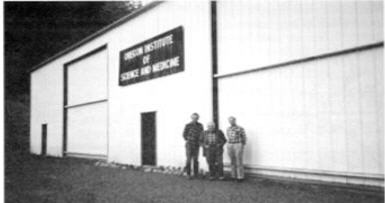To say that the oft-touted "
30,000 Global Warming Petition" project stinks would be the understatement of the year.
I thought it would be timely to once again break down this flawed
piece of global warming denier propaganda after it was mentioned last
night in
Daily Show host Jon Stewart's interview with US Energy Secretary of Energy, Dr. Stephen Chu.
.1% of Signers Have a Background in Climatology
The Petition Project website offers
a breakdown of the areas of expertise of those who have signed the petition.
In the realm of climate science it breaks it breaks down as such:
Atmospheric Science (113)
Climatology (39)
Meteorology (341)
Astronomy (59)
Astrophysics (26)
So only .1% of the individuals on the list of 30,000 signatures have a
scientific background in Climatology. To be fair, we can add in those
who claim to have a background in Atmospheric Science, which brings the
total percentage of signatories with a background in climate change
science to a whopping .5%.
The page does not break out the names of those who do claim to be
experts in Climatology and Atmospheric Science, which makes even that
.5% questionable [see my section on "unverifiable mess" below].
This makes an already questionable list seem completely insignificant given the nature of scientific endeavor.
When I think I'm having chest pains I don't go to the dermatologist, I
go to a cardiologist because it would be absurd to go to skin doctor
for a heart problem. It would be equally absurd to look to a scientist
with a background in medicine (of which there are 3,046 on the petition)
for an expert opinion on the science of climate change. With science
broken down into very narrow specialties a scientific expert in one
specialty does not make that person an automatic authority in all things
science.
In this way the logic of the 30,000 petition is completely flawed, which isn't surprising given its questionable beginnings.

The Petition's Sordid Beginnings
The petition first emerged in April 1998 and was organized by Art Robinson of the self-proclaimed
"Oregon Institute of Science and Medicine" (OISM) [their headquarters are the Photo Inset].
Along with the
Exxon-backed George C. Marshall Institute,
Robinson's group co-published the infamous "Oregon Petition" claiming
to have collected 17,000 signatories to a document arguing against the
realities of global warming.
The petition and the documents included were all made to look like official papers from the prestigious
National Academy of Science. They weren't, and this attempt to mislead has been well-documented.
Along with the petition there was
a cover letter from Dr. Fred Seitz (who
has since died), a notorious climate change denier (and big tobacco
scientist) who over 30 years ago was the president of the National
Academy of Science.
Also attached to the petition was an apparent
"research paper" titled
Environmental Effects of Increased Atmospheric Carbon Dioxide.
The paper was made to mimic what a research paper would look like in
the National Academy's prestigious Proceedings of the National Academy
journal. The authors of the paper were Robinson, Sallie Baliunas, Willie
Soon (both oil-backed scientists) and Robinson's son Zachary. With the
signature of a former NAS president and a research paper that appeared
to be published in one of the most prestigious science journals in the
world, many scientists were duped into signing a petition based on a
false impression.
The petition was so misleading that the National Academy
issued a news release
stating: "The petition project was a deliberate attempt to mislead
scientists and to rally them in an attempt to undermine support for the
Kyoto Protocol. The petition was not based on a review of the science of
global climate change, nor were its signers experts in the field of
climate science."
An Unverifiable Mess
Time and time again, I have had emails from researchers who have
taken random samples of names from the list and Google searched them for
more information. I urge others to do the same. What you'll quickly
find is either no information, very little information or information
substantiating the fact that the vast majority of signers are completely
unqualified in the area of climate change science.
For example,
"Munawwar M. Akhtar" - no info other than the fact that he is a signatory on the petition.
"Fred A. Allehoff" - no info other than the fact that he is a signatory on the petition.
"Ernest J. Andberg" - no info other than the fact that he is a signatory on the petition.
"Joseph J. Arx" - no info other than the fact that he is a signatory on the petition.
"Adolph L. Amundson" - a paper by Amundson on the "London Tunnel Water Treatment System Acid Mine Drainage." [PDF]
"Henry W. Apfelbach" - an Orthopedic Surgeon
"Joe R. Arechavaleta" - runs an Architect and Engineering company.
And this is only names I picked in the "A's." I could go on, but you
get my point. The list is very difficult to verify as a third-party, but
this hasn't stopped the Petition from bouncing around the internet and
showing up in mainstream media.
Given all this it seems to me that anyone touting this as proof that "global warming is a hoax" completely
misunderstands the process of scientific endeavor or has
completely exhausted any real argument that rightfully brings into to doubt the reality of climate change.
Or, then again, they could just be
in it for the money.
Follow Kevin Grandia on Twitter: www.twitter.com/kgrandia











